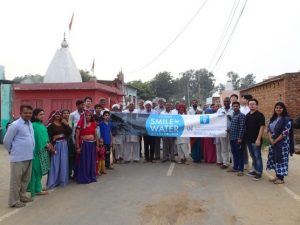 |
SMILE by WATER
In light of the adoption of the Sustainable Development Goals (SDGs) by the Member States of the United Nations in September 2015, Junior Chamber International (JCI) Japan, a public interest incorporated association, decided to kick off the campaign of SMILE by WATER up until 2020 to contribute to the realization of Goal 6, Clean Water and Sanitation: Ensure availability and sustainable management of water and sanitation for all.
Junior Chamber International Japan
http://www.jaycee.or.jp/
In the fiscal year of 2018, as the third year of the SMILE by WATER campaign, Japan Water Forum (JWF) collaborated with JCI Japan and provided support in conducting the SMILE by WATER project of securing safe drinking water and sanitation facilities for villages and schools in the rural areas of India.
Details of the Project in 2018
1) Project Title
SMILE by WATER Project 2018
2) Project Sites
Ramnagar Village in the Pataudi Block, Gurgaon District;
Jalalpur Village in the Tauru Block, Mewat District; and
Rithoj Public School, Hajipur Public School, Kiranki Public School in the Sohna Block, Mewat District, Hariyana State, India
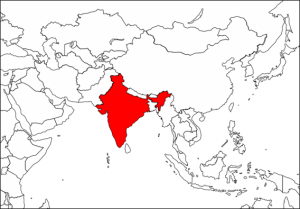 |
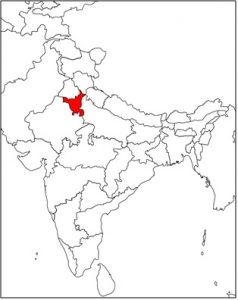 |
| India | Hariyana State |
3) Number of Beneficiary
Around 700 residents of Ramnagar Village
Around 220 residents of Jalalpur Village
80 pupils and 10 teachers of the Rithoj Public School
40 pupils and 2 teachers of the Hajipur Public School
116 pupils and 4 teachers of the Kiranki Public School
4) Project Period
February 2018 through November 2018 (10 months)
5) Local Partner
PHD Rural Development Foundation
http://rdf.phdcci.in/
6) Problems
The 2 target villages (i.e. Ramnagar and Jalalpur Villages) used wells that are 1 or 2 kilometers away from the villages as their water supply sources for drinking and domestic use. The role of fetching water for the household use is mainly fulfilled by women and girls of the villages, and they had to walk to the wells several times a day to get the water as a daily practice. The distance to the nearest water sources and the hard work of carrying water back to their homes made them hard to acquire enough water necessary for their daily use; thus, adverse effects on securing the food and sanitation were evident.
As to the 3 target schools (i.e. Rithoj, Hajipur, and Kiranki Public Schools), they had latrines at school, however, most of them were impaired due to breakage, aging degradation and/or undeveloped water supply systems. Therefore, their sanitation facilities were under unhealthy conditions and some children defecated in the open.
7) Outputs
●Ramnagar Village
Conducted focused group discussions with the residents, dug one (1) deep well, laid main water-supply pipes, connected the main pipes to the existing water-supply facilities, and painted the walls (4 public spaces within the village).
●Jalalpur Village
Conducted focused group discussions with the residents, dug one (1) deep well, laid main water-supply pipes, connected the main pipes to the existing water-supply facilities, extended the pipes from the existing water-supply facilities to the shared water faucets, and painted the wall of public space.
●Rithoj Public School
Conducted discussions with the school operators, built a sanitation facility (with 2 separated toilet rooms), repaired the existing sanitation facilities (3 spaces), retained water-supply facilities (installation of water storage tanks and pipes), painted the walls of the sanitation facilities (7 places), and implemented the educational program (5 times).
●Hajipur Public School
Conducted discussions with the school operators, built a sanitation facility (with 2 separated toilet rooms), repaired the existing sanitation facilities (2 places), installed a wastewater infiltration inlet (one unit), retained water-supply facilities (installation of water storage tanks and pipes), painted the walls of the sanitation facilities (7 places), and implemented the educational program (6 times).
●Kiranki Public School
Conducted discussions with the school operators, built a sanitation facility (eco-san toilet with one separated toilet room), repaired the existing sanitation facilities (3 places), installed a wastewater infiltration inlet (one unit), retained water-supply facilities (installation of water storage tanks and pipes), painted the walls of the sanitation facilities (7 places), and implemented the educational program (6 times).
8) Potential Impacts
The facilities of getting safe drinking water within the village have been in place for the 2 target villages (i.e. Ramnagar and Jalalpur Villages). Therefore, it is expected that the life of the village people will be improved by being able to acquire enough water for drinking and domestic use, and what’s more, without walking to the distant water sources.
For the 3 target schools (i.e. Rithoj, Hajipur, and Kiranki Public Schools), the sanitation facilities of school including adequate water-supply systems have been retained and in place. New toilet rooms have been also added and the raising-awareness program and trainings for pupils, teachers and school workers have been conducted in order to use and maintain the sanitation facilities in an adequate manner. Because of these practices, the sanitary condition is expected to be improved.
Photos during the Project
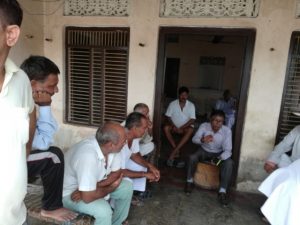 |
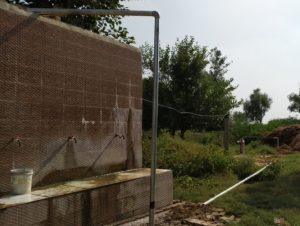 |
|
Discussing with the neighboring community union |
A newly digged-well and the existing water storage facility of Ramnagar Village |
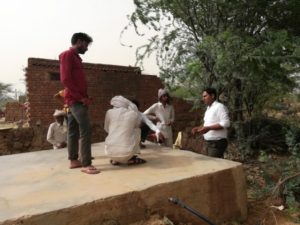 |
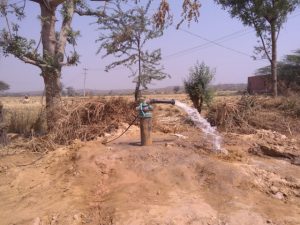 |
| Discussion with the residents of Jalalpur Village |
A newly digged-well in Jalalpur Village |
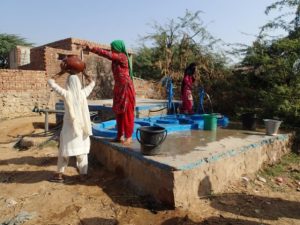 |
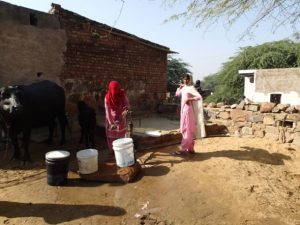 |
| A water station renovated from the existing facility of Jalalpur Village |
A shared water-faucet newly built within Jalalpur Village |
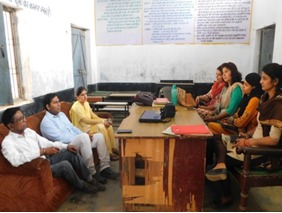 |
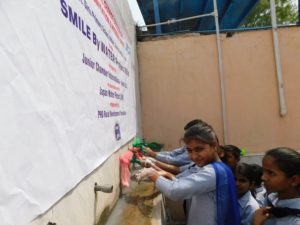 |
| Discussing with the school operators of the Rithoj Public School |
Pupils learning the hand-washing practice in the Rithoj school’s education program |
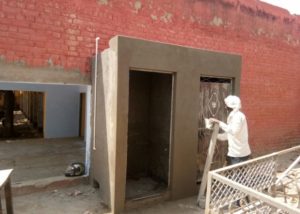 |
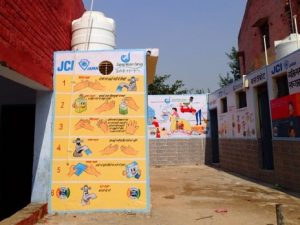 |
|
Building the toilet facility at |
Exterior of the repaired toilet facility |
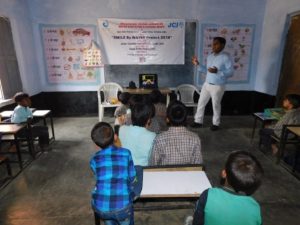 |
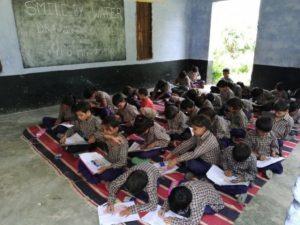 |
| Pupils learning the hygienic behavior and practice in the education program of the Hajipur Public School |
Pupils drawing pictures as part of the awareness-raising education program of the Hajipur Public School |
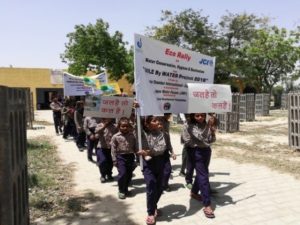 |
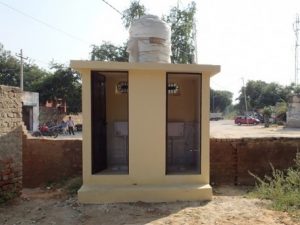 |
|
Pupils in an awareness-building march as |
A newly-built sanitation facility |
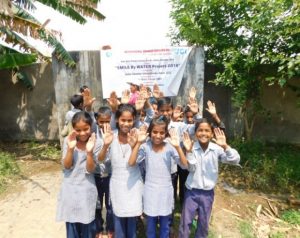 |
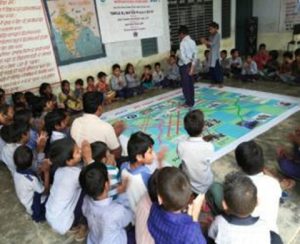 |
| Pupils after the Kiranki school’s education program of hand-washing |
Pupils learning hygienic practice through a game as part of the education program of the Kiranki Public School |
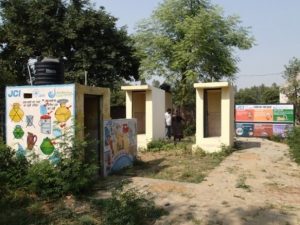 |
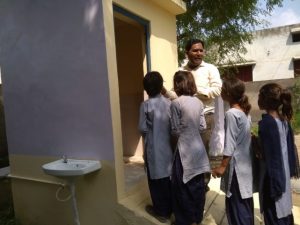 |
| Exterior of the repaired sanitation facility at the Kiranki Public School |
Pupils learning how to use new toilets from the PHDRF staff at the Kiranki Public School |
Japan Water Forum would like to express our sincere gratitude to Junior Chamber International Japan, PHDRDF (local partner organization), neighboring community unions of the villages, and many other people who worked with us, as this Project could not have been completed without your support and cooperation.
(Reported by Sae Ishihara and Akie Gunji, Managers of Japan Water Forum)
